Rare Rides Icons: The History of Imperial, More Than Just a Car (Part VI)

Our Rare Rides Icons series on the Chrysler Imperial picks up today at perhaps the most pivotal time in Imperial’s history. As the model’s fifth generation concluded in 1954, Chrysler was also concluding development of its big secret plans for Imperial: A new luxury brand of exclusivity and prestige.
By the early Fifties, it was apparent to Chrysler that in order to compete with domestic luxury players like Lincoln and Cadillac (Packard was headed into the sunset by then, but offered the Patrician) that Imperial needed set apart from the rest of Chrysler. Recall from our last entry that by the early Fifties, Imperials with the exception of the long-wheelbase Imperial Crown were basically de-chromed versions of the New Yorker.
A clear break occurred for the 1955 model year when the sixth-generation Imperial appeared as the first generation of a new marque – the Imperial Division of Chrysler Corporation. Imperials wore no Chrysler badges, and Chrysler made sure to notify all 48 states that Imperial was a legally separate brand, and titled as such. The change meant that in ’55, Cadillac removed the Imperial name from its highest trim limousine models. More glamorous and luxurious than their predecessors, new Imperials were penned by lead Chrysler designer Virgil Exner, who led all Chrysler’s design work from 1955 through 1963.
Imperial’s new lines were a part of the incredibly Fifties sounding “100 Million Dollar Look,” as all versions wore more eye-catching styling than before. Not reserved exclusively for Imperial, 100 Million flowed down to Chrysler’s less glamorous offerings as well. Smoother hood lines met with more aerodynamic shapes, in a style where rear fenders were blended almost entirely into the side of the body. Chrome was much more present in 1955 than it was in 1954, as American car design entered a new phase: make everything flashy. There was more detailing in the new independent Imperial; no longer the more conservative sibling of the New Yorker. Notably the rear tail lamps were free-standing on the fenders, and looked like gunsights.
However, the 100 Million Look actually debuted previously, so it’s time for a parade car side bar. Keen observers at the time recognized the ’55 Imperial’s styling from a very special Imperial from three years prior. For 1952 only, Chrysler built a trio of Imperial Parade Phaetons that wore different styling to the production Imperial. The genesis of Exner’s 100 Million Look, the Parade Phaeton used a wheelbase three inches longer than even the Imperial Crown, at 147.5 inches. Bodywork on the 240-inch cars was entirely custom. Only the grille, bumpers, and front and rear trim were grafted from the standard Imperial Crown. Set up as a dual-cowl phaeton (a body style gone by the Fifties), front and rear passengers were separated by a wall, and had their own windshields. Intended purely as a car for event usage and indoor storage at all other times, the Parade Phaeton had no side windows. In the event some shade was needed, the convertible covered only the rear passengers. Three total Imperial Parade Phaetons were produced, and they were sent to New York City, Los Angeles, and finally Detroit. Chrysler owned and maintained all three phaetons, and in 1955 brought them all back to Detroit for a visual update to match the 1956 Imperial. All three Imperial Parade Phaetons exist today. Now, back to 1955.
Again Imperial had a standard wheelbase, and a long wheelbase reserved for the Crown. The standard wheelbase was 130 inches; three and a half inches shorter than the standard length Imperial of the year before. The Imperial Crown used a very long 149.5-inch wheelbase. Underneath, Imperial was on the same basic platform as the other large Chrysler offerings like the New Yorker. However, its wheelbase was four inches longer than any Chrysler. Power arrived from the same 331 cubic inch (5.4L) Hemi V8 as the prior-year Imperial, and it was still paired to the same two-speed PowerFlite automatic.
Several different body styles were available in 1955, with standard length cars around 223 inches long. Imperial kept its traditional model numbering system, with C-69 and C-70. C-69 models were the two-door Newport hardtop, and the standard four-door sedan, while C-70 was reserved for the Imperial Crown eight-passenger sedan and partitioned limousine. Sales of the exciting new Imperial were immediately better (more than double) sales in ’54. Chrysler sold 3,418 Newports, 7,840 sedans, and 172 Crown limousines. AirTemp was an optional extra in 1955, and consumers who checked the box spent $535 ($5,542 adj.) for the privilege of climate control. But air conditioning was not a considerable expense with base asking prices like $4,720 ($48,895 adj.) for the Newport coupe, $5,187 ($53,732 adj.) for the sedan, and $7,737 ($80,148 adj.) for the Crown limousine.
With their newfound success, Chrysler moved Imperial proudly into 1956 with several changes. The Newport wasn’t luxurious enough for the Imperial brand of 1956, so it was renamed Southampton. In addition to the extant two-door hardtop, Southampton was also applied to a new four-door hardtop that year. The wheelbase for all models was extended by three inches, to 133 overall. That increased the exterior length of standard models by more than six inches, to 229.6. At a time when length really mattered in a luxury car, Imperial was the longest American car that was not a limousine. It was a length record that would stand until Chrysler trumped themselves with the Imperials of the 1970s, but we’ll get to those later. Imperial for ’56 was slightly narrower than before, as width shrunk from 79.1 inches to 78.8. All cars were taller as well, 61.5 inches over 61.2 from Imperial’s introductory year.
Power was upgraded for 1956, as the FirePower Hemi V8 grew to 354 cubic inches (5.8L). Chrysler got more with the times on the transmission front, as mid-1956 was the debut year of a long-lived transmission line: TorqueFlite. The first in the series was a three-speed, the A466. Along with the new transmission came a new selector, a push-button setup that reflected neutral, drive, low, and reverse in north, east, south, and west placements respectively. There was no parking gear on TorqueFlite until 1960, so don’t forget that parking brake. Notably at the time, GM and Chrysler automatics started out in first gear when in drive, while Fords started in second.
On the infotainment front, as it were, there was a new radio option for Imperials in 1956, the all-transistor. Developed in conjunction with Philco, the 914HR by Mopar was the first all-transistor car radio in the world. The advantages of a transistor radio were its reduction in battery use – 10 percent of the power required by a tube radio – and relative reduction in maintenance. At $150 ($1,548 adj.), the 914HR was priced separately from the optional Highway Hi-Fi, Chrysler’s in-car record player.
The sixth-generation Imperial lasted just two years as the brand’s first foray into independent brand land. Sales decreased overall slightly after its debut year, at 10,458 in total. Sales for the Crown actually increased, and 226 were sold in 1956. Chrysler wanted more of the luxury pie, so in 1957 Imperial got even more independent, and Virgil Exner started to spill more and more ink from his design pen. Until next time.
[Images: Imperial]

Interested in lots of cars and their various historical contexts. Started writing articles for TTAC in late 2016, when my first posts were QOTDs. From there I started a few new series like Rare Rides, Buy/Drive/Burn, Abandoned History, and most recently Rare Rides Icons. Operating from a home base in Cincinnati, Ohio, a relative auto journalist dead zone. Many of my articles are prompted by something I'll see on social media that sparks my interest and causes me to research. Finding articles and information from the early days of the internet and beyond that covers the little details lost to time: trim packages, color and wheel choices, interior fabrics. Beyond those, I'm fascinated by automotive industry experiments, both failures and successes. Lately I've taken an interest in AI, and generating "what if" type images for car models long dead. Reincarnating a modern Toyota Paseo, Lincoln Mark IX, or Isuzu Trooper through a text prompt is fun. Fun to post them on Twitter too, and watch people overreact. To that end, the social media I use most is Twitter, @CoreyLewis86. I also contribute pieces for Forbes Wheels and Forbes Home.
More by Corey Lewis
Latest Car Reviews
Read moreLatest Product Reviews
Read moreRecent Comments
- Ajla IMO, something like this really should be naturally-aspirated.
- Kjhkjlhkjhkljh kljhjkhjklhkjh Unless they are solid state batteries you BAN THEM. I like EVs... but EVs like to burn ... for days
- Kjhkjlhkjhkljh kljhjkhjklhkjh uh .. it looks like a VW golf got the mumps
- Kjhkjlhkjhkljh kljhjkhjklhkjh I CANNOT WAIT FOR SOCIAL SECURITY TO GET GUTTED.. No i am really serious. I am insulated thanks to 24 years at Symantec then Broadcom .. tons of retirement cash. but all the blue hairs and low income trump voters are going to lose benefits and jobs and i get to laugh allllll dayyyyy long in about 2-3 years.. CANNOT WAIT, POPCORN READY.
- Kjhkjlhkjhkljh kljhjkhjklhkjh no. to many '''''americans'''' just want a CUV or SUV according to sales numbers



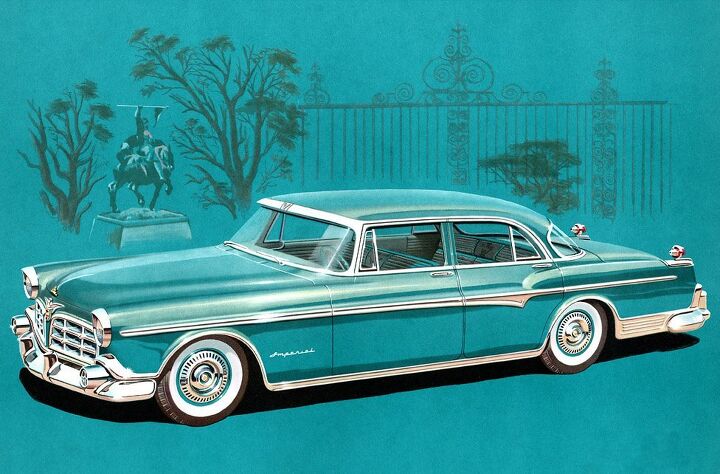
























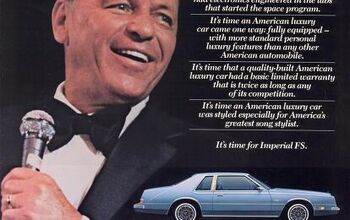
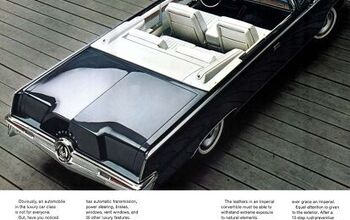
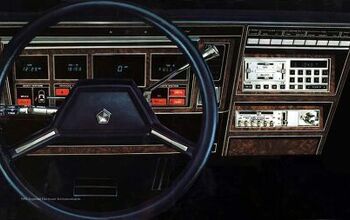
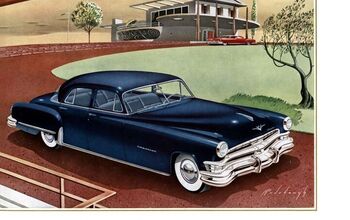
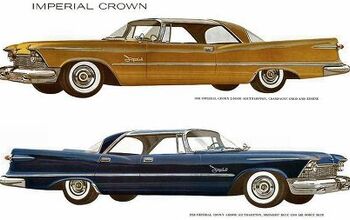










Comments
Join the conversation
These were strikingly handsome cars, but their obvious relationship to the lower-priced 1955 and 1956 Chrysler and DeSoto models on which they were based made them a tough sell. They kind of seemed like over-priced fancy versions of the lower-priced models and not really as distinctive as Cadillac or even Lincoln.
This series and rare rides overall is highly entertaining and amazing. Great work.